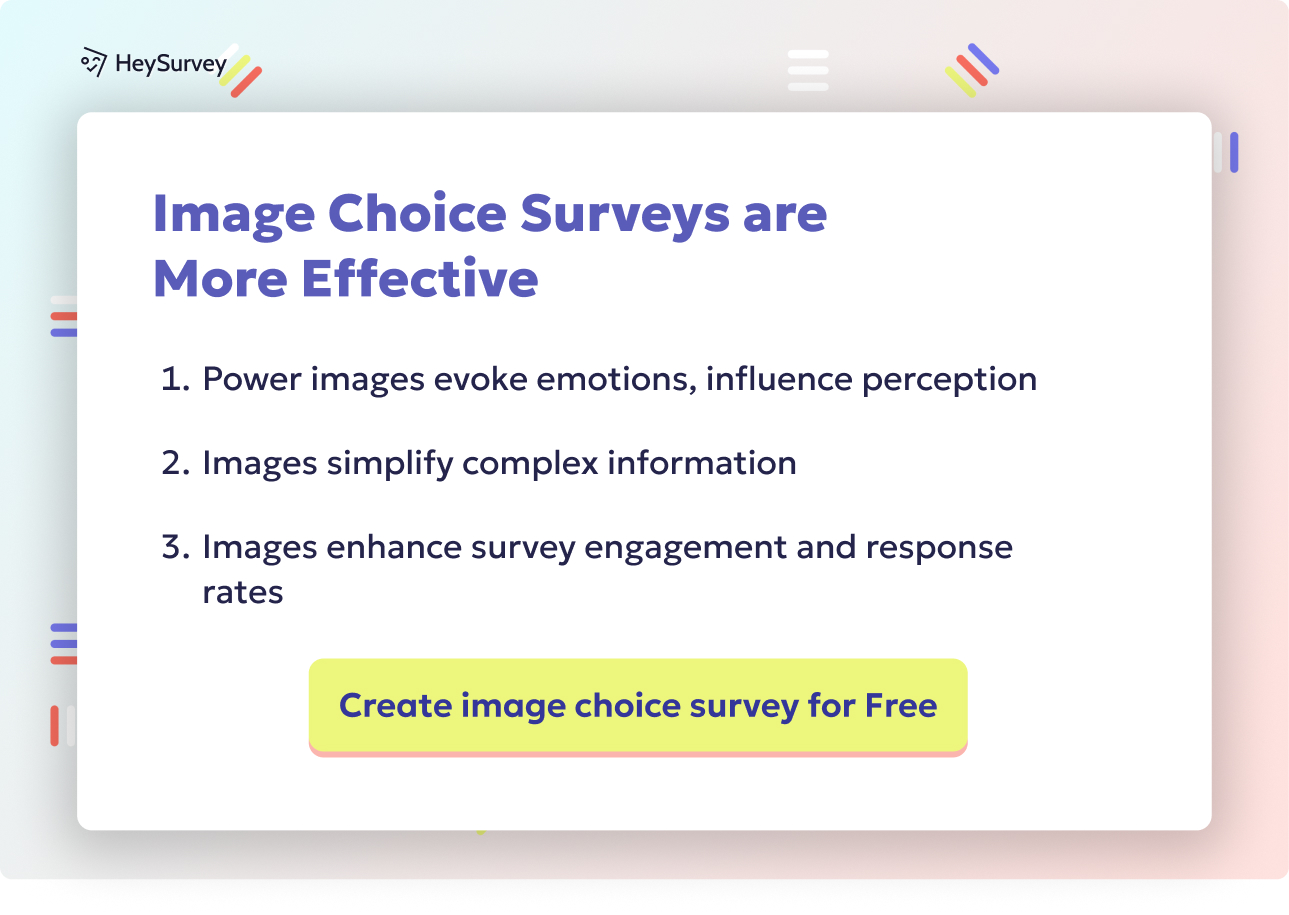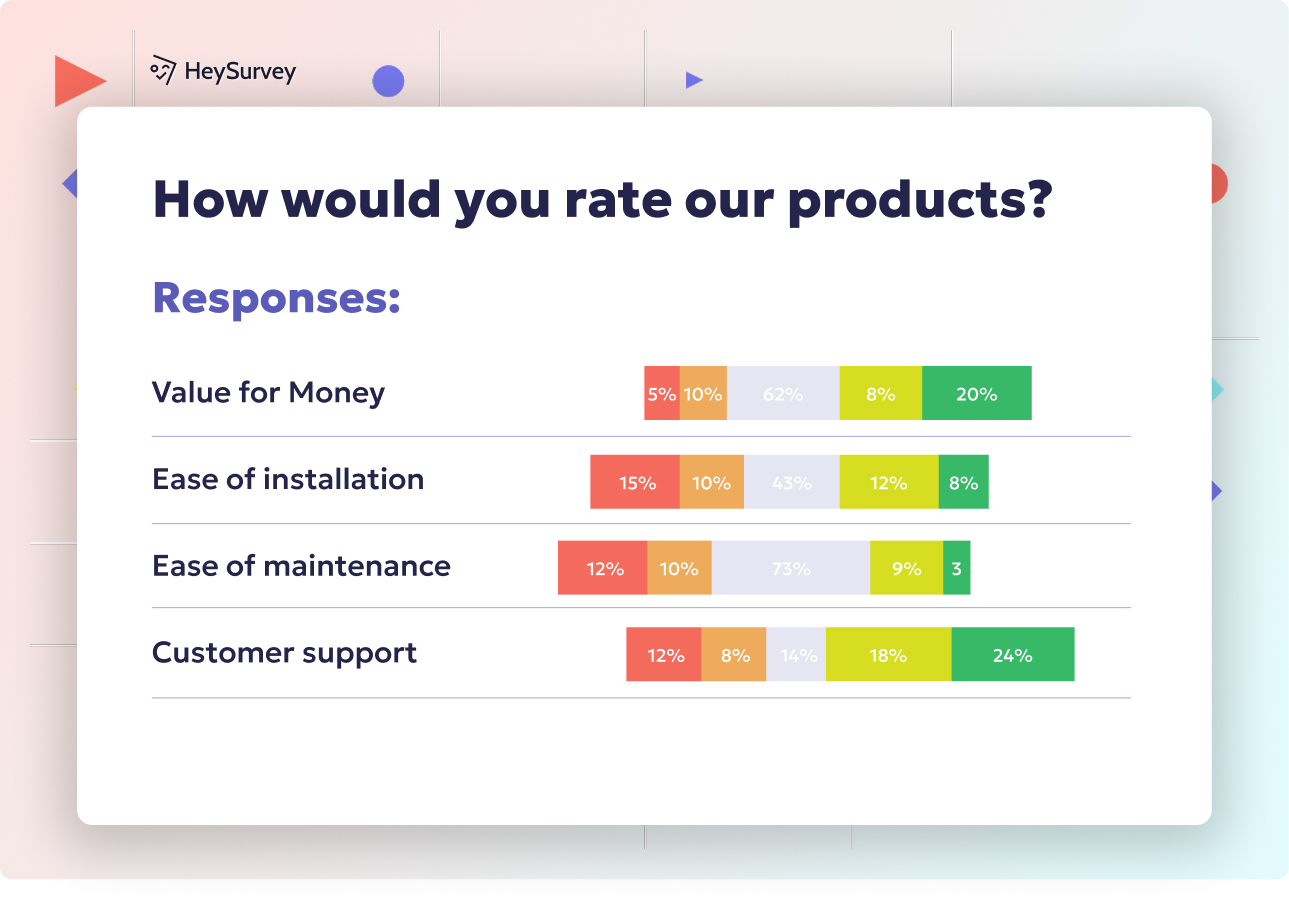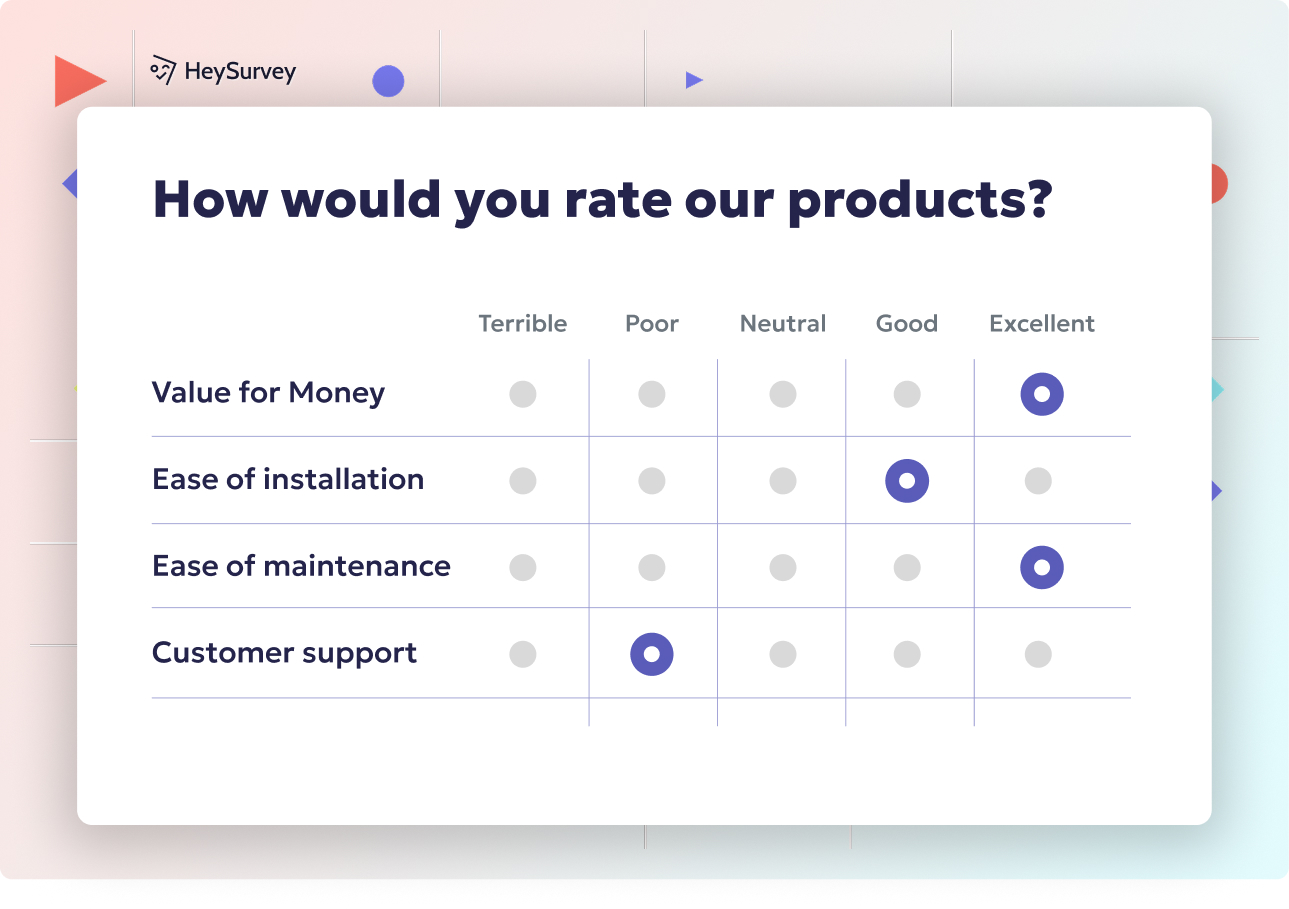31 Religion Survey Questions: Ultimate Guide to Question Types
Explore comprehensive religion survey questions featuring 28 sample items to capture faith identity, practices, attitudes, and more.
Religion surveys are unique tools used to better understand how faith and belief shape communities, workplaces, and everyday life. Researchers, schools, nonprofits, and HR teams use these surveys in many contexts—from academic studies to diversity programs to government reporting. Designing these surveys means navigating a landscape rich in cultural sensitivity, strict anonymity, and legal respect. Asking the right kinds of questions not only honors respondents but also leads to more trustworthy insights and better engagement. This guide covers the main types of religion-focused surveys, helping you match the right questions to your goals.
Demographic Religion Identification Survey
What Are Demographic Religion Identification Questions?
A religious demographic question is the keystone of most faith-based surveys. These questions use simple formats, such as single-select, multi-select, and a respectful “prefer not to say” option to capture a respondent’s religious identity. The aim is to let people locate themselves in a map of religious affiliation as clearly or as broadly as they wish, while always feeling included.
A faith identity survey may ask for current religious membership, former affiliations, or spiritual labels. Some allow for multiple identities or the choice to remain private. Careful writing ensures no group feels “othered” or boxed in.
- Use structured lists covering major world religions.
- Don’t forget minority groups, secular, or spiritual-but-not-religious types.
- Always add a write-in “Other” and “Prefer not to say” option.
Why & When to Use Demographic Questions
You’ll want these baseline questions when you need:
- Population profiling for social sciences, psychology, or marketing.
- DEI benchmarking in workplaces or public agencies.
- Census supplements that break down religious landscape shifts.
- Market segmentation targeting services or outreach by religious group.
5 Sample Demographic Religion Identification Questions
- Which of the following best describes your current religious identity?
- Please select any additional spiritual traditions you also identify with.
- Were you raised in a different faith than the one you practice today?
- How important is religion or spirituality in your life right now?
- Do you prefer not to disclose your religious or spiritual background?
When designing surveys on religious identification, it's crucial to use inclusive language, provide context for sensitive questions, and offer options like "prefer not to say" to respect respondent privacy. (surveymonkey.com)

Creating your religion-focused survey with HeySurvey is a breeze. Just follow these simple steps to get your project off the ground and collecting answers in no time.
Step 1: Create a New Survey
- Start by logging into HeySurvey or, if you prefer, jump right in without an account to explore.
- Click on “Create New Survey” and choose either an Empty Sheet to build from scratch or pick a relevant Pre-built Template to save time and get ideas flowing.
- Give your survey a name that clearly reflects your research focus (like “Interfaith Attitudes Poll” or “Faith Identity Survey”).
- Once created, you’ll land in the friendly Survey Editor—your command center for everything survey-related.
Step 2: Add Your Questions
- Hit the “Add Question” button located at the top or between sections to start adding your content.
- Select question types that fit your research aims, like single choice for demographics, Likert scale for attitudes, or matrix for ranking interfaith activities.
- Customize your questions by typing them in, adding descriptions if needed, and toggling options like required answers or allowing multiple selections.
- You can spice things up with images from Unsplash or Giphy, or add markdown formatting (bold, lists) for clarity and style.
- Don’t forget to include a respectful “prefer not to say” or “Other” option where applicable—it keeps things inclusive and anonymous.
Step 3: Preview and Publish Your Survey
- Before sending your survey out into the world, click the “Preview” button to test the flow on desktop and mobile devices.
- Adjust any design or content hiccups on the fly via the Designer Sidebar without leaving preview mode.
- When you’re happy, hit “Publish”. You’ll get a shareable link to send via email, social media, or embed on your website.
- Note: Publishing requires a HeySurvey account so you can access collected data and manage responses securely.
Bonus Step 1: Apply Branding to Make It Yours
- Head to the Branding and Settings Panel to upload your organization’s logo at the top left corner.
- Customize colors, fonts, and backgrounds with the Designer Sidebar for a look that matches your brand vibe.
- This personal touch can boost participant trust and survey recognition.
Bonus Step 2: Define Survey Settings for Control
- Set your survey’s start and end dates to control when it’s live.
- Limit the number of respondents if you need a specific sample size.
- Add a custom redirect URL where users land after completing the survey—perfect for thank-you pages or further resources.
Bonus Step 3: Use Branching for Smarter Surveys
- If your questions depend on earlier answers, enable branching so respondents only see relevant sections.
- Create multiple endings or tailor follow-up questions based on faith affiliation or engagement levels.
- This keeps your survey concise and respectful of each participant’s unique journey.
When you’re ready, grab the template below to jumpstart your religion survey with HeySurvey’s easy-to-use tools. Happy surveying!
Depth-of-Belief & Practices Survey
Utilizing Likert Scales and Frequency Questions
A religious practice questionnaire digs deeper, using Likert-scale and frequency-based items. Here, responses move past labels and ask how often respondents pray, worship, or study scripture. These measure strength of faith and rituals, adding depth and subtlety to demographic data.
This type of question might ask you to rate your agreement from “Strongly Agree” to “Strongly Disagree” or to note how many times a week a religious practice occurs. The tone is respectful and curious, not evaluative. Each answer paints a more vivid picture of belief in action.
- Capture frequency of attending religious services.
- Explore daily, weekly, or holiday practices.
- Ask about private vs. public acts of faith.
Why & When to Use Depth-of-Belief Questions
Reach for these when you aim to:
- Understand personal religious engagement for sociological research.
- Shape community programs to match local faith habits and needs.
- Assess a congregation’s or institution’s chaplaincy or pastoral care priorities.
5 Sample Questions for Depth of Belief & Practices
- How often do you attend religious services in a typical month?
- On a scale from 1 to 5, how central is prayer in your daily routine?
- How regularly do you read religious texts or scriptures?
- How important are rituals or sacraments in your faith practice?
- How comfortable are you discussing your beliefs with others?
Likert-scale surveys effectively measure the depth of religious beliefs and practices, providing nuanced insights into personal faith engagement. (pmc.ncbi.nlm.nih.gov)
Religious Attitudes & Tolerance Survey
Measuring Pluralism and Social Distance
A religious tolerance survey moves beyond who believes what. It’s about the attitude climate—how open or reserved people are about interfaith relationships, pluralism, and shared spaces. These surveys use semantic-differential (opposing word pairs) and agreement-scale questions to map nuance in opinion and comfort.
The focus here isn’t right or wrong answers—just honest attitudes. Measuring how people regard other faiths shines a light on areas for dialogue or potential friction. By using neutral language, you avoid social desirability bias (the urge to give the “nice” answer).
- Rate feelings about interfaith marriage or diverse worship environments.
- Explore comfort levels around sharing religious holidays.
- Include social distance: Would you want your child’s teacher to be of another faith?
Why & When to Use Religious Attitudes & Tolerance Questions
Best applied in:
- Interfaith initiatives designed to boost collaboration and peace.
- Diversity training programs in education, government, or business.
- Conflict-resolution research targeting areas of tension or misunderstanding.
5 Sample Religious Attitudes & Tolerance Questions
- How comfortable would you feel attending a religious service of a different faith community?
- To what extent do you agree: I support interfaith marriages within my family.
- How open are you to having close friends with different religious beliefs?
- Rate your agreement: Workplaces should celebrate religious diversity among employees.
- Would you participate in a shared interfaith service or event in your community?
Interfaith Engagement & Collaboration Survey
Revealing Engagement and Willingness
When you want to go from attitudes to action, an interfaith collaboration questionnaire is your best friend. These surveys use matrix and ranking questions to give insight into how individuals or groups might participate in dialogue circles, shared volunteer projects, or cultural events.
Matrix questions present a grid: Respondents match activities or topics against interest or comfort. Ranking questions let participants order their top choices for joint events or pinpoint barriers to involvement. Both formats make priorities and hesitations crystal clear.
- Compare enthusiasm for various forms of cooperation (dialogue vs. volunteering).
- Unearth perceived obstacles to participating with other faiths.
- Collect suggestions for improvement in interfaith activities.
Why & When to Use Interfaith Engagement Questions
Deploy these for:
- NGOs and community centers planning joint activities or workshops.
- School programs committed to building inclusive campus life.
- Assessing readiness for or feedback on dialogue and volunteer programs.
5 Sample Interfaith Engagement & Collaboration Questions
- Rank these interfaith activities in order of personal interest: dialogue circles, joint volunteer work, shared holiday celebrations, study sessions.
- Which topics would you most like to explore in an interfaith discussion group?
- What barriers, if any, prevent you from participating in interfaith activities?
- How likely are you to recommend interfaith events to your friends and family?
- Rate your willingness to serve alongside people of other faiths in community projects.
Less than a third of college students reported developing better skills to interact with people of diverse beliefs during their college years. (insidehighered.com)
Religion’s Impact on Lifestyle & Decision-Making Survey
Connecting Faith to Everyday Choices
A religion and lifestyle survey makes one thing clear: faith doesn’t stop at the sanctuary doors. Scenario-based and multiple-choice questions connect beliefs to everything from healthcare decisions to finances to voting habits. This set helps organizations spot trends in how spiritual values shape big and small choices.
A great faith-based decision question might offer a realistic scenario—with several possible responses. This way, you see what role, if any, spirituality plays outside ritual. The tone here welcomes honesty, even around touchy or taboo subjects.
- Touch on dietary restrictions, medical treatments, or preferred schools.
- Explore how holy days shape work or spending plans.
- Check how teachings inform ethical stances or political choices.
Why & When to Use Lifestyle Impact Questions
Pull these out when you’re:
- Designing public health campaigns adapting messages for faith-sensitive audiences.
- Conducting consumer research on products or services with religious relevance.
- Running political polls or academic research into voter motivation and values.
5 Sample Religion’s Impact on Lifestyle & Decision-Making Questions
- If offered a medical procedure that conflicts with your religious beliefs, how likely are you to seek an exemption or alternative?
- How does your faith influence your dietary choices or restrictions (e.g., halal, kosher, vegetarian)?
- When making significant financial decisions (like holiday spending or donations), how important are religious guidelines to you?
- Would you consider sending your children to a faith-based school? Why or why not?
- How does your religious or spiritual view affect your voting behavior on key issues?
Spiritual Needs & Support Services Survey
Identifying Unmet Support and Care Preferences
A spiritual care survey isn’t just about beliefs—it’s about care, comfort, and access. By using open-ended questions (“describe your needs or wishes”) and checkbox lists (“mark all that apply”), you get a window into what helps people feel spiritually supported—especially in hospitals, prisons, universities, or the military.
A chaplaincy needs assessment often taps into rituals, materials, or visitation people desire. This approach is more qualitative, giving space for nuance and story, not just numbers. People feel truly heard when surveys meet them where they are.
- Collect information on needed or desired rituals, prayer rooms, chaplain visits.
- Identify obstacles to accessing spiritual services or materials.
- Gauge frequency and type of contact people want with support providers.
Why & When to Use Spiritual Needs & Support Service Questions
These questions matter most when:
- Guiding hospital chaplaincy or spiritual care programs.
- Informing counseling and support services in settings like prisons or universities.
- Allocating resources so no faith group is overlooked.
5 Sample Spiritual Needs & Support Services Questions
- Which specific religious or spiritual services would you like available to you (e.g., prayer, meditation, worship space)?
- How often do you wish to receive visits from a spiritual leader or chaplain?
- Are there religious texts or materials you feel are missing or hard to access?
- What barriers make it difficult for you to practice your faith in this setting?
- Please describe any rituals, observances, or holidays important to your spiritual well-being.
Measuring Religious Change Over Time (Longitudinal Panel Survey)
Designing for Change Tracking
A religious change survey goes beyond snapshots—it tracks faith journeys. By using longitudinal or panel survey techniques, you invite the same people to check in multiple times over months or years. That’s how you spot conversion, disengagement, spiritual revival, or even generational shifts.
Longitudinal surveys require steady hands: question consistency keeps results comparable, while retention strategies (thank-you notes, incentives) help researchers keep participants engaged. This is faith trend tracking at its most powerful.
- Include major life events that could shift beliefs (marriage, loss, milestones).
- Ask about membership, congregation activity, or changes in certainty.
- Track both increases and declines in spiritual commitment.
Why & When to Use Longitudinal Panel Surveys
This approach fits when:
- Running academic studies on religious change across time.
- Monitoring denomination membership or participation trends.
- Researching how life circumstances change spiritual outlook.
5 Sample Longitudinal Survey Questions on Religious Change
- Since last survey, how confident do you feel in your religious or spiritual beliefs?
- Has your level of participation in religious communities increased, decreased, or stayed the same?
- What life events, if any, have most influenced your faith since the last survey?
- Have you started or stopped identifying with any religious group in the past year?
- How has your overall sense of spirituality changed over time?
Best Practices: Dos and Don’ts for Religion Surveys
Dos for Successful Religion Surveys
There are golden rules behind every effective religion survey question. These dos ensure your feedback is honest, rich, and respectful:
- Offer anonymity by never linking answers to names or emails.
- Use inclusive language that welcomes all backgrounds and identities.
- Pilot-test your survey to catch confusing or biased questions.
- Provide a “prefer not to answer” option at every sensitive juncture.
- Follow all relevant laws and guidelines (GDPR, EEOC, etc.).
Don’ts to Avoid in Religious Survey Design
A few don’ts keep your survey welcoming—and ethical—from start to finish:
- Never ask leading questions that hint at a desired answer.
- Avoid judgmental or evaluative wording (no “should” or “must”).
- Never force someone to reveal private information.
- Don’t mix up cultural with religious identity—each is unique.
Design & Delivery Tips for Maximum Completion
For best results, remember to:
- Design for mobile devices, so everyone can respond anywhere.
- Use logical branching so questions match respondent experience.
- Keep data secure with encryption and clear privacy notices.
- Use well-labeled sections so people always know what’s next.
Conclusion & Next Steps
Designing religion survey questions is both an art and a science, blending respect with curiosity. Aligning the question type to your goals leads to better, more meaningful responses. Ready to craft the best faith questionnaire? Download templates, test your drafts, and always stay compliant. With careful design, your next religion survey can offer both insight and inclusion.
Related Diversity Survey Surveys

29 Cultural Competence Assessment Survey Questions for Success
Explore 30 cultural competence assessment survey questions across seven types to effectively meas...

29 Gender Equality Survey Questions to Drive Real Change
Explore 30 insightful gender equality survey questions across workplace, education, marketing, an...

29 Religion Survey Questions Sample – Ultimate Guide for Insight
Explore 25+ religion survey questions sample for accurate, respectful faith-based data across aff...

